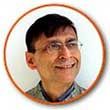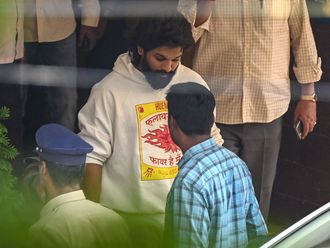
International Yoga Day, June 21st, came and went for us without much intensity. I remember wishing my wife, an advanced Yoga teacher, and a few friends who were aware of the global significance of this day, might have organised something to mark it.
However, we had no activities, meditation, or practice to speak of. This made me realise that we needed to move away from outer distractions, particularly politics, and focus more on our inner life.
June 21, of course, is the longest day of the year, symbolising much more light than darkness. Light, symbolic of higher consciousness, resides as a seed within each of us.
This seed, hidden in the folds and veils of the multiple layers of our being, remains warm like an ember, glowing when we turn to it with even the softest touch of our breath. It gradually begins to shine more brightly as we become more aware of it and pay greater attention to it.
With some inner dusting, cleaning, and cleansing, the light within us begins to shine more brilliantly. Gradually, it comes to the forefront of our being.
Strands of light entwine and grow through the darkest crevices of our being. The hidden parts of ourselves, the dark spots we are often unaware, or ashamed of, come into the spotlight.
The Divine consumes them. We become lighter, with the heavy weights and burdens of our past dropping away like shadows of bygone dark days.
Gathering of serious seekers
Now, a few days after June 21, I am filled with wonder and gratitude. On July 4, American Independence Day, I was at a yoga retreat in the beautiful city of Greenville, South Carolina. How did this happen? I suppose it was sheer luck. But here, a very serious group is anchored by H.P. Rama, the owner of a major hotel chain.
He started La Grace, the Sri Aurobindo Integral Life Center, which conducts an annual retreat. This year, I have been invited to speak at this gathering of serious seekers.
The theme of this year’s retreat is “Living an Integral Life.” What does this mean? It refers to the fragmentation we experience, both inside and out. Our world is divided into factions and blocs, and our nations are often marked by great internal strife and struggle.
Closer to home, each community and family has its conflicts and fights. Our intimate relationships, whether with our spouses, parents, or children, have their own share of tensions, clashes, and divergences.
Most of all, we are deeply conflicted within. This internal, never-ending conflict is sooner or later projected and reflected outward. The self and the species are thus deeply intertwined in inescapable ways. Yoga, which means joining or union, is much more than a series of physical postures or exercises.
Journey of self-perfection
It is a journey of self-perfection, in which we strive to actualise our highest potential. To do this, we need help not only from other human beings but from nature and, ultimately, from whatever we believe in as the higher Self, God, or the Divine.
In his masterwork, The Synthesis of Yoga, Sri Aurobindo defines Yoga as follows: “a methodised effort towards self-perfection by the expression of the secret potentialities latent in the being and — highest condition of victory in that effort — a union of the human individual with the universal and transcendent Existence….” For Sri Aurobindo, Yoga is not something “mystic or abnormal,” detached from ordinary life and its daily challenges. Instead, he boldly asserts, “all life is either consciously or subconsciously a Yoga.”
This view challenges the age-old idea that in this imperfect world, we must either renounce and retreat from the world or aim for salvation or heaven post-mortem.
Sri Aurobindo writes, “No synthesis of Yoga can be satisfying which does not, in its aim, reunite God and Nature in a liberated and perfected human life or, in its method, not only permit but favour the harmony of our inner and outer activities and experiences in the divine consummation of both.”
When I was invited to this retreat, I was perplexed about why it is so difficult to find inner equanimity or integral harmony. Sri Aurobindo helped me understand that as human beings, we are not unified but composite entities.
There is our physical body, with its animal nature, encasing a heart full of emotions and a mind full of thoughts. The process of integration is to realise and unify these disparate constituents.
That, in a nutshell, would be a yoga for our times. A yoga that the world needs for inner harmony and peace on earth.








_resources1_16a45059ca3_small.jpg)

